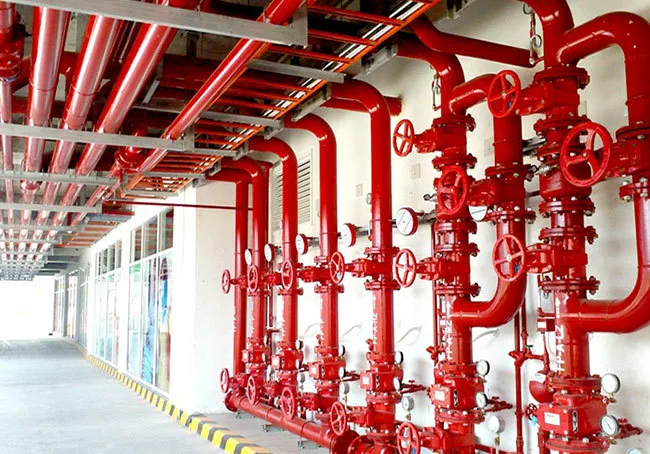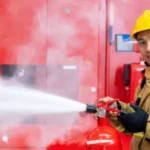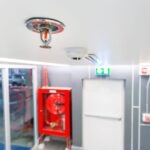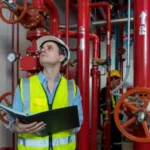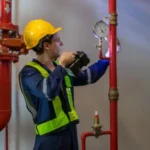Nowadays, industries are dependent on cold storage and high-piled inventory systems, and the storage facilities’ fire protection has become highly important. Ranging from E-commerce stores to food distributors, these kinds of businesses store massive quantities of goods that require additional protective measures not just for capacity, but also for safety.
Performance based design fire protection strategies are becoming more common to create customized strategies for unique layouts of modern storage environments and deal with specific risks. Unfortunate fire incidents can lead to devastating damage to assets, operations, infrastructure, processes, and employee welfare. Today, operational environments deem fire protection as a major necessity rather than just an add-on.
Why Are Storage Facilities So Prone to Fire?
Several factors make these storage facilities so fragile and fire-prone:
- High fuel load. Fire incidents can be worsened by combustible substances like boxes, plastic wraps, and flammable chemicals can worsen a fire.
- Stacked Goods. Increased vertical storage leads to the spread of flames vertically and makes it harder to control.
- Limited Access. Overhead aisles and racking systems cover sprinkler heads and restrict movement for fire solution access.
- Operational heat sources: Various devices, like forklifts and conveyor systems, can also contribute to fire ignition risks.
Failing to implement the right fire protection system, these vulnerabilities can lead to devastating consequences. Small factors can convert a small fire spark into a million-dollar disaster.
Why Fire Protection Systems Are Essential
Modern fire protection systems are not just limited to sprinklers on the ceiling. These are much more than sprinklers on ceilings. Here are some reasons why they are important:
- Life Safety
The safety of workers and guests comes first. Fire protection systems allow for the earliest possible detection and response, which ensures the safety of everyone involved. If a facility lacks effective systems, there could be injuries or even fatalities in case of an emergency.
- Asset Protection
Inventory stored on-site is usually valued at millions. A single incident of fire could lead to the destruction of inventory, damage to storage racks, and important machinery becomes inoperative. While insurance might assist, it rarely covers full losses or downtime.
- Code Compliance
Unique fire suppression methods are required for different buildings and storage arrangements. Moreover, these methods need to be in accordance with Local fire codes and building regulations. For instance, NFPA 13 has certain specifications concerning high-piled storage that must be adhered to. Noncompliance could result in fines, business suspension, and/or permit revocation.
- Operational Continuity
Sometimes, even a small fire incident can bring significant operations to a halt. Even the most minimal damages can lock the service provider into elongated recovery periods because clients can easily lose trust, leading to missed deadlines, hampered business relations, and disrupted supply chains. There are several benefits associated with having good fire protective measures that aid in preventing downtimes and ensuring smooth business operations.
- Reduced Insurance Premiums
Insurance companies often provide discounts or lower premiums for facilities equipped with modern fire suppression systems. It’s a proactive risk-reduction measure that can lead to long-term savings.
Technologies for Modern Storage Facilities: Fire Protection
Storage facilities should utilize a combination of detection, prevention, and fire suppression technologies. The following five-grade systems stand out as the most efficient:
• ESFR Sprinklers
Specially tailored for high pile storage, ESFR sprinklers activate swiftly to extinguish fires that would otherwise escalate. Using sprinklers can significantly reduce the need for in-rack sprinkler systems.
• In-Rack Sprinkler Systems
Used within the shelving or racking units, these offer localized suppression and control of lightweight flammable fire for tightly packed goods.
• Dry Pipe Systems
A dry pipe system prevents the freezing of water in pipes within cold storage and freezers by keeping water out until fire is detected.
• Smoke and Heat Vents
These vents automatically detect smoke and heat, improving visibility and reducing damage by ventilating the building.
• Draft Curtains
In large open spaces, these barriers channel smoke and heat toward the designed vents and sprinklers, enhancing the systems’ efficiency and fire control
• Alarm Systems
Integrated with building management systems, advanced devices like smoke detectors, heat and gas sensors, and other monitored devices automate building response for early notifications.
Strategies for Fire Protection by Industry
Every sector has its specific requirements when it comes to fire safety:
• Food Distribution and Cold Storage
Fire protection systems in freezers should prevent pipe freezing. Dry pipe and pre-action systems are often used to do the same. Given the nature of stacking, it is necessary to provide proper spacing between units for coverage.
• Manufacturing and Warehousing
Warehouse systems, comprised of automated material handling systems, need carefully designed fire protection systems. This system must avoid interfacing with conveyors or other equipment. Precise planning and detailed warehouse fire sprinkler system design can be achieved through 3D CAD modeling.
• Storage of Dangerous Materials (“H” Occupancy)
The storage units that comprise flammable liquids, chemicals, and oxidizers are classed as dangerous. Therefore, these must be controlled under rigorous fire safety regulations. Containment areas, explosion-proof fittings, and special sprinklers are frequently part of the containment systems used in these facilities.
Retrofitting Existing Facilities- A Smart Investment
Usually, the older buildings were not designed and constructed with high-piled storage in mind. Investing in new fire protection systems in these facilities can help improve vertical storage space, enhance operational safety, and prolong the usable life of the facility.
By working with fire protection specialists and material handling systems planners, many companies can increase their usable storage space by over 100% while bringing fire safety systems up to modern standards. This all could be done without the need for reconfiguration or new construction.
What Are the Best Practices for Fire Protection in Storage Facilities
- Conduct a risk assessment: It is important to determine your commodity classes and storage configurations.
- Design for flexibility: Necessary for the future expansion of your business.
- Use qualified professionals: It is important to hire reliable and licensed fire protection engineers to create effective designs and perform optimal installations.
- Maintain regularly: Regular inspections and servicing are necessary according to the NFPA standards.
- Train staff: Employees should be aware of fire procedures and emergency protocols.
Conclusion
Fire protection systems are necessary for storage facilities where downtime can cost thousands of dollars per minute. Investing in fire protection systems for these kinds of storage units is not just important for ensuring safety, but it is also important as a strategic business investment. These systems help ensure the protection of employees and assets. Also, helps in maintaining operational continuity. Investing in the right fire system can mean the difference between recovery and ruin.
All types of companies should treat fire protection as an important part of facility flooring design and maintenance! With smarter code-compliant systems and proactive planning, companies can protect their investments, their people, and their future. Into a new world of possibilities!
FAQs
Q1: What is the optimal fire protection system for high-piled storage?
The Early Suppression Fast Response (ESFR) sprinkler is the best fire protection system because it provides early suppression of a fire while activating quickly.
Q2: If I have ceiling sprinklers, do I still need in-rack sprinklers?
This is dependent on your commodity class, the height of storage, and the rack arrangements. If your in-rack commodity is high-risk or packaged tightly together in a rack, the use of in-rack sprinklers provides targeted protection.
Q3: How often should I inspect my fire protection systems?
Fire protection systems are generally tested on a quarterly, semi-annual, and annual basis per NFPA 25. Typically, your local codes define the particulars as well.
Q4: Can we retrofit fire protection systems in an older building?
Yes, upgrading or retrofitting a modern fire protection system into an existing older building requires more time and effort, but it is a good thing to do. A modern fire protection system in an older facility improves safety and adds storage space in the building. Most importantly, when a modern fire protection system is installed, the facility will meet the current code.

